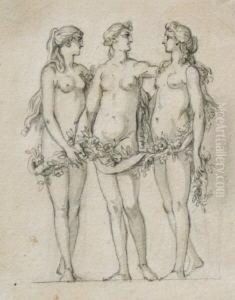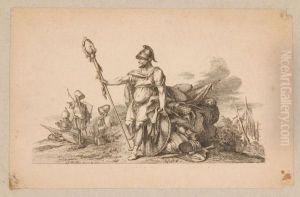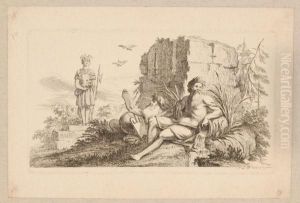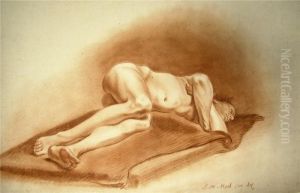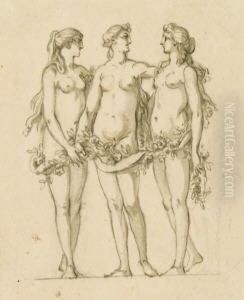Johann Wilhelm Meil Paintings
Johann Wilhelm Meil was a German artist born on March 3, 1733, in Berlin, Prussia. He was known primarily for his work as an engraver and illustrator. Meil's artistic career developed in the context of the Enlightenment in Europe, a period that was characterized by a burgeoning interest in knowledge, science, and the arts. Within this intellectual climate, book illustration became an essential means of disseminating ideas and knowledge, and Meil became one of the prominent figures in this field.
Meil received his artistic training in his hometown of Berlin, where he studied under the prominent engraver and painter Georg Friedrich Schmidt. Meil's skills quickly developed, and he became known for his precise and elaborate copperplate engravings. Throughout his career, Meil produced a vast number of illustrations for books, including works on history, literature, and topography. His engravings often depicted scenes with a keen attention to detail and an emphasis on clarity, making them well suited for the educational and scholarly works they accompanied.
Aside from his engravings, Meil also worked as a painter, though his paintings are less well-known than his illustrative work. His style was rooted in the Rococo tradition, which was popular during his lifetime, and he was part of a generation of artists who transitioned to the early neoclassical style. Meil's contributions to the arts were recognized in his time, and he held a position at the Royal Prussian Academy of Arts.
Johann Wilhelm Meil's legacy is largely as an engraver and illustrator whose work helped to shape the visual culture of his era. His engravings can be found in libraries and collections, serving as a testament to the craftsmanship and detail-oriented work of 18th-century printmaking. Meil passed away on February 5, 1805, in Berlin, leaving behind a body of work that continues to be studied by art historians and enthusiasts of the printmaking medium. His work remains a valuable resource for understanding the visual representation of ideas during the Enlightenment in Germany.
